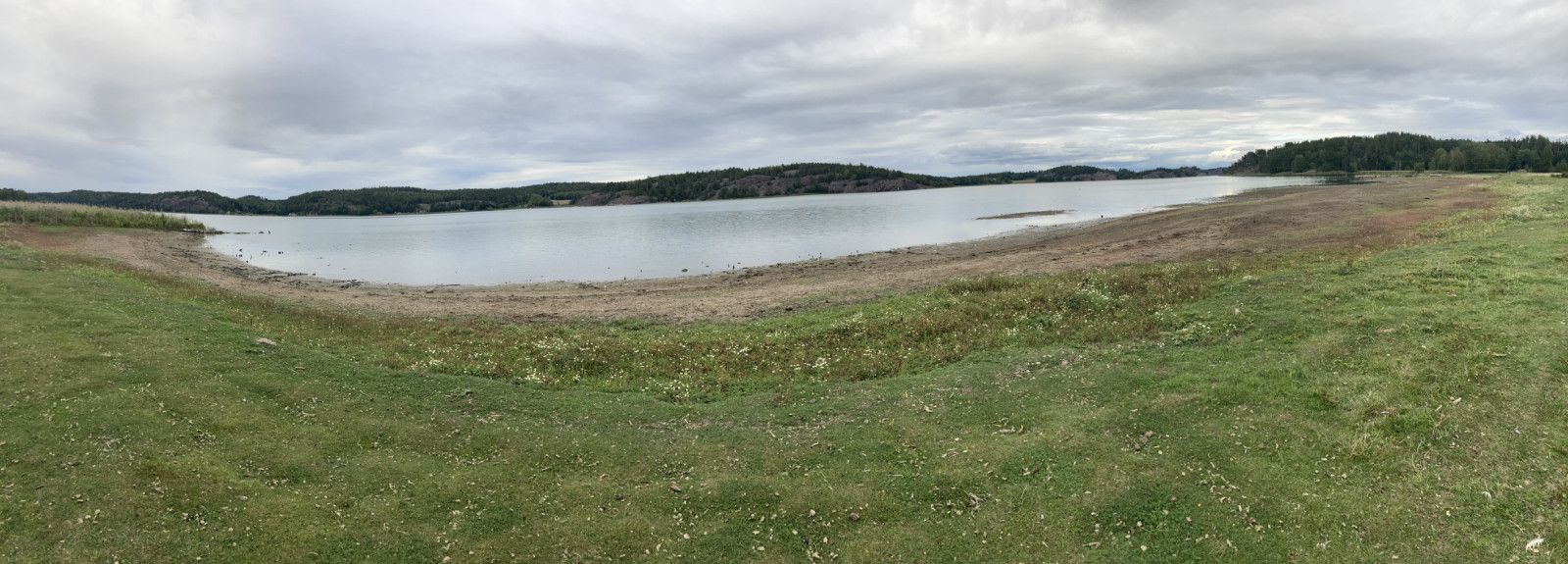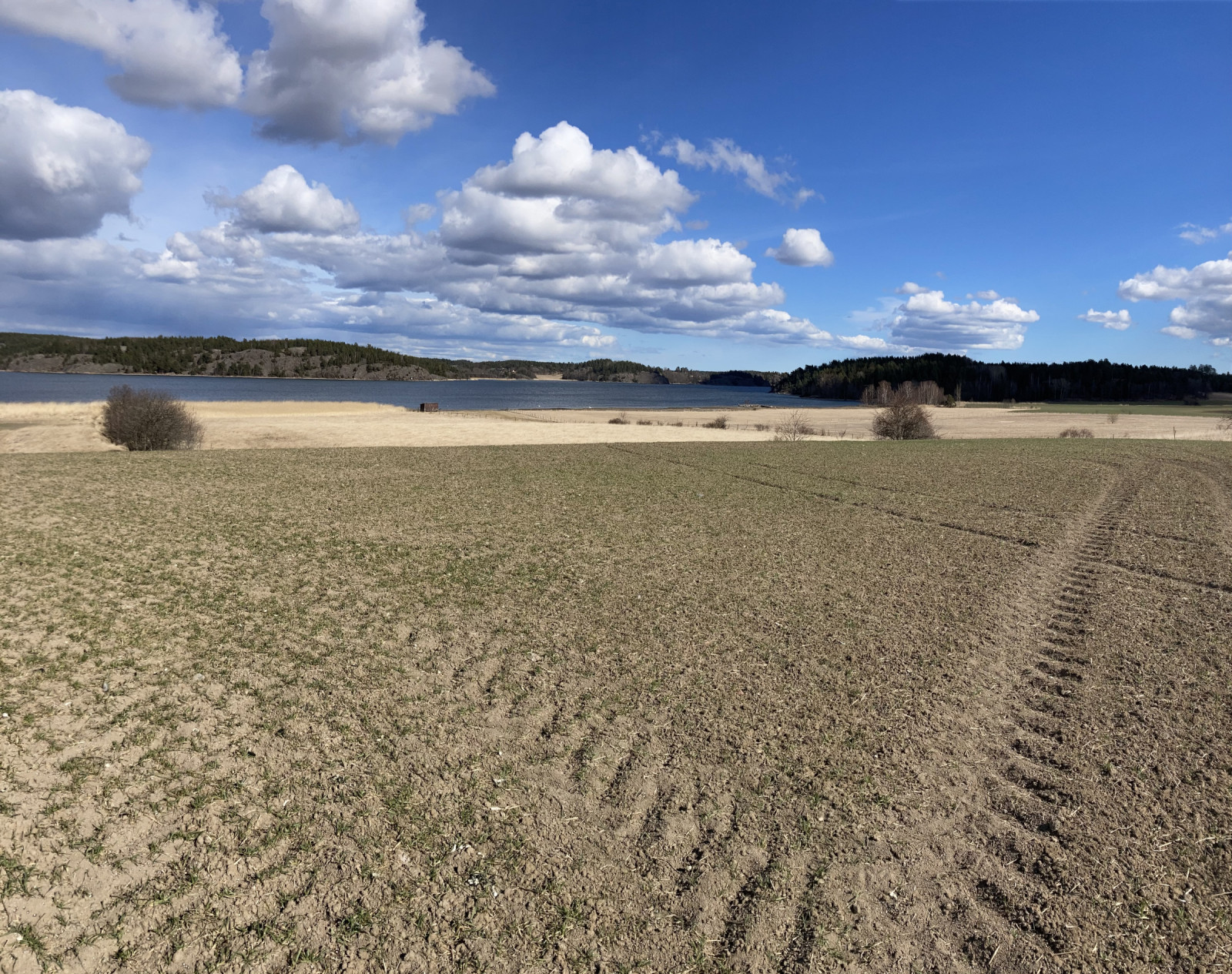Descrição
The birds start to arrive at Killingholmen in February when the ice starts to loose its grip on the coastal waters. Then ducks start to rest in the shallow parts of the bay; Zarro-negrinha (at most 100) and around 1000 Merganso-grande can be found. Also the rarer winter ducks like Marrequinha-comum, Zarro-comum, Merganso-pequeno, Zarro-bastardo and Merganso-de-poupa. A few hundred geese and around 100 Cisne-bravo feed on the areas fields and coastal meadows around march. In March the other early spring birds also arrive; Laverca, Pombo-torcaz, Estorninho-malhado and Abibe-comum. In spring you can find Chapim-de-bigode in the reed beds.
Year round Gavião da Europa, Águia-rabalva and Águia-d'asa-redonda are the common predatory birds. But Águia-real, Tartaranhão-azulado and Milhafre-real pass by the area. Most common passerine birds arrive in March/April. Slätbaken is a stopping point for passerine birds, which makes it common to find uncommonly early Cotovia-pequena and Tordeia.
From late February and in March the owls in the area can be heard calling. Coruja-do-mato Mocho-pigmeu and Bufo-real are sometimes heard. In March more geese start to arrive and not only the common Ganso do Canadá and Ganso-comum. Also Ganso-grande-de-testa-branca (at most 67) and Ganso-de-faces-brancas (at most 100). Ganso-campestre, Tundra Bean Goose and Ganso-de-bico-curto are sometimes found. Also Cisne-pequeno has been observed.
On the coastal meadows large amounts of passerine bird start to rest in the end of March and in April. Petinha-dos-prados, alvéola-branca, Pintarroxo-comum are the most common. Among these Petinha-marítima is regularly seen. In the large grassy areas Coruja-do-nabal can be found. On the coastal meadows Maçarico-das-rochas, Pássaro-bique-bique, Perna-vermelha-comum, Piadeira, Frisada, Pato-trombeteiro, Maçarico-bastardo, Tarambola-dourada, Narceja-comum and Mergulhão-de-crista. Most common dabbling ducks are found but only Marrequinha-comum is numerous (at most 70). At the Torpa damm Marreco and Arrabio have been seen, along with smaller amounts of other ducks.
In april large amounts of thrushes move past the fields and coastal meadows. Hundreds of Tordo-comum, Tordo-ruivo-comum, Tordo-zornal and Tordeia are seen. In the end of May and April most birds disappear, except for the breeders.
In May the latest passerine birds, and night active birds arrive. On the fields Tartaranhão-caçador, falcão-peregrino and Codornizão are found. gaivota-da-asa-escura sometimes rest on the coastal meadows in May. Pintarroxo-carmíneo often sings here. On the meadows Ganso-de-faces-brancas, Ganso-comum, Ganso do Canadá, Frisada, Perna-vermelha-comum, Abibe-comum, Mergulhão-de-crista, Zarro-negrinha, Pato-olho-d'ouro and Galeirão-comum breed. In the area Pica-pau-malhado-pequeno, Picanço-de-dorso-ruivo, Marrequinha-comum and Cisne-bravo breed. At Storåns river mouth you can observe Guarda-rios-comum.
During autumn Hov strandängar becomes better for birding. From July the area is a good site for wading birds such as Abibe-comum, Maçarico-real, Borrelho-grande-de-coleira, Borrelho-pequeno-de-coleira, Maçarico-das-rochas, Narceja-comum, Tarambola-dourada, Perna-verde-comum, Perna-vermelha-comum, Combatente, Maçarico-bastardo and Pássaro-bique-bique. These are all common, while Pilrito-pequeno, Pilrito-comum, Maçarico-galego, Pilrito de Temminck and Pilrito-de-bico-comprido are more rare.
Other wetland birds are often found. Among the rarer birds Guarda-rios-comum, Gaivina-de-bico-vermelho, Pisco-de-peito-azul and Garça-branca-grande can be noted. Large amounts of gulls, geese and terns can be found, especially Ganso-comum which some years have been found as numerous as 3000.
Large amounts of passerine birds are found in the meadow areas. The most numerous passerine birds are Pintassilgo (250 at most), Andorinha-das-chaminés (500 at most), Cartaxo-nortenho, Chasco-cinzento, Estorninho-malhado (600 at most). Later in autumn Mergulhão-pequeno, Narceja-galega, Pintarroxo-de-bico-amarelo, Mergulhão-de-pescoço-castanho, Merganso-pequeno and Zarro-bastardo are sometimes found.
Detalhes
Acesso
Inre Slätbaken is located east of the town of Söderköping. Parking can be found around Hov and several other places. Click on a P in the map for directions to a parking spot.





